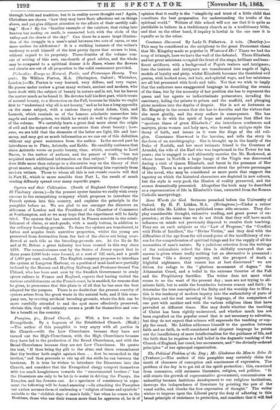Oysters and their Cultivation. (South of England Oyster Company, 36
Finsbury circus.)—In the present oyster famine we really wish every success to the enterprising company which proposes to introduce the French system into this country, and explains the principle in the pamphlet before us. We are glad to see amongst the directors an alderman of London and the President of the Chamber of Commerce at Southampton, and so we may hope that the experiment will be fairly tried. The system that has succeeded in France consists in the estab- lishment of claires, or mud-ponds, with a marly bottom, in addition to the ordinary breeding-grounds. To these the oysters are transferred, to fatten and acquire fresh nutritive properties, whilst the young are preserved from destruction from the fact of the claires not being over- flowed at each tide as the breeding-grounds are. At the Ile de Re and at St. Brie= a great industry has been created in this way since 1859. The commissioners sent by the States of Jersey report that in three years 2,000 beds were formed, at a cost of 12L each, and a profit of 1,000 per cent. realized. The English company proposes to introduce the system at Langston Harbour, on a portion of mud-land now partially inclosed by the Havant and Hayling Railway, and Professor Gerard Von Uhland, who has been sent over by the Swedish Government to study oyster culture in France and England, reports that having visited the various establishments on the French coast, he is enabled, for reasons that he give; to pronounce that this place is of all that he has seen the best adapted for the purpose. There is no doubt that the present scarcity of oysters arises from the great waste- in the natural beds, and if this com- pany can, by erecting artificial breeding-grounds, where the fish can be more carefully attended to and the spat more effectively preserved, obviate this, they will certainly secure a profit for themselves and con- fer a benefit on the country.






























 Previous page
Previous page